AuthorNebo D. Lukovich This time our subject is not the romantic kind of love or infatuation. Not wanting to underestimate or demean romantic love, I would say that pure Love (with capital “L”) is something immensely glorious and powerful, yet immeasurably gentler than romance. The Love we are talking about here is the ultimate divine force in the universe. It is not an emotion, nor is it a state of mind. It is the true state of the heart and its union with oneness.
If our hearts were as pure as that, we wouldn’t need any techniques; our minds would be one with our hearts and we would all have a perfect existence filled with Love and Presence (Pure consciousness). But, as we all know, that isn’t the case. We are all still working toward that goal. Love, as well as Presence, is incredibly important. We have to purify our hearts to be able to really emanate Love. In order to cleanse our hearts, we need to be reasonable, resourceful, and persevering in our everyday work on ourselves. We must continuously apply techniques, while being guided by our hearts and reason at the same time. Love dissolves all negativity in us. It has also a great healing power. We can heal ourselves and other people as well, just with Love. If we were able to open up our hearts entirely and lastingly, I believe it would be absolutely enough for complete healing. Healing with Love can be one of the most powerful methods of healing work. Yet, for the majority of people, it is the most challenging way. Why is this so? It’s because our hearts are often closed and wrapped in many layers of mind content. However, all of us occasionally feel Love, often without any apparent reason. Sometimes we see a little child and our hearts can’t help but open to the pure innocence which is emanating from that being; or we see a dog or some other animal that simply wants to play; or we meet with an old friend; or there is no reason whatsoever. Love just springs out from us and it’s invaluable. It makes barriers disappear, suffering diminish, and fears vanish. The power of pure Love is undeniable to any negativity in us or outside of us. I would certainly recommend the approach of many spiritual and psychological teachings that encourage us to develop Love in our hearts, both toward ourselves and others—but first toward ourselves! It is not selfishness. It is like the safety instructions on commercial planes: a parent must put their own oxygen mask on before helping their child. The same is true in life. If we aren’t able to help ourselves first, we aren’t able to help others, which we seek to do so much. If you are able to open your heart entirely, at least for a while, the flow of Love will pour out of you. First it will fill your being completely, then it will flow to others, without exception… even to our enemies! Enemies, (if we have them at all) are in fact our greatest teachers. They are often a concentration of many traits and behaviors that bother us, which in turn tells us about ourselves, and our own long suppressed parts. Although being unaware of this, they show us clearly which traits in our personality we should work on. We should love those persons because of this! They are projections of our inner suppressed parts. It’s time to take a completely different position in your life—to get wisdom not through pain anymore, but through nurturing Love and Presence within you, in every situation, with every being. So, inside your mind you can always tell those people or your corresponding inner parts: “I love you. Thank you for all your valuable lessons. You have always taught me how to gain wisdom and maturity through suffering. From now on, give me your help through Love and Presence.” I believe Love can heal any part of life. It can heal any illness, any dysfunction, challenge or problem. Sometimes, when I had a cold, I would remind myself that the best thing I could do would be to open up my heart and feel Love for myself, for all people around me and toward the whole world. Whenever I succeeded even a little bit in that “opening” endeavor (though it shouldn’t had been an endeavor at all), in a matter of hours I was up on my feet again, feeling completely renewed and healed. How can you wake up Love in your heart? I can recommend only some of the numerous ways to do that. For example, imagine that a little child, or toddler, is approaching you. It’s smiling innocently at you, wobbling in its walking. It’s so cute, with bright, smiling eyes staring at you. The child is giggling with its sweet voice, telling you “I love you!” You are embracing it with warmth. How couldn’t you feel Love toward such an innocent being? Let Love rush out from your heart. When you open your heart, let Love fill you completely. Extend it also to yourself. Love yourself with your whole heart! Feel that you deserve the deepest Joy and Happiness. After all, you have always been giving the best you could. You, as that child, need only to be happy. You only want to be happy in your life and you definitely deserve that! Love yourself, your body, and your whole being. Wish yourself all the best. Love all parts of your being and personality, all traits, flaws, mistakes and imperfections; love the body that has served you so dutifully your whole lifetime; love your life, your past, present and future, anything that comes to your mind. Let Love amplify and expand to encompass all people around you. Love your family, your children, spouse, parents, friends, colleagues; love your job, your errands and annoying things; love your enemies, too; let Love pour out from your heart toward all of them. Extend your Love to all humanity. Feel yourself as a part of it. Love your darling pets; love all animals, plants and all living beings. Love your Mother Earth, the entire Universe, the entire Existence. Feel the fact that countless beings exist within Creation, and all of them are trying to be happy in some way. Wish them all true happiness with your whole heart. This is Love and it is miraculous. It can potentially heal, harmonize and mature everything. Try not to expect healing, but love yourself and all beings around you. If the healing should come, it will come, to both you and inevitably those around you. Something wonderful will surely happen, although you cannot know what it will be. If you want to heal other people, the answer is simple: grow Love within your heart, express it, and you will be healing yourself and the people around you in the best way.
0 Comments
AuthorNebo D. Lukovich Mindfulness simply means to consciously live in the present moment. You have to do any activity fully conscious of yourself and of the activity itself. Although many people don’t consider it as strictly spiritual, mindfulness indeed is a purely divine practice. It leads you to your True nature, while dissolving your inner conflicts softly and almost imperceptibly. Moreover, every conscious moment in the Now will gradually accumulate and make your whole life easier. It will abate or even prevent challenges. When mindfulness becomes your intrinsic way of living, you will enjoy every task, you will become light and, in a strange way, even transparent. You will start sensing some inexplicable joy and deep inner peace. You will feel love more and more, both to yourself and people around you. Mindfulness dissolves your inner conflicts softly and almost imperceptibly. Pure consciousness in everyday life will enable you to do any task perfectly. All your relationships will gradually improve in various subtle ways. You will be at perfect harmony with the world; your body will move lightly and flawlessly; your mind will function impeccably whenever needed, and all your actions will be done in the most effective way. Thus, if you drop a thing or stumble upon something unexpectedly, it is a clear message from your divine core: awaken, be present, feel your Heart! However, without regular meditation sittings, your mindfulness can easily lose its foundation. Therefore, it is highly recommended to practice them concurrently. You have countless varieties of meditation at your disposal. You can choose one of the modern types of “pure awareness” or “body awareness” meditations, for example like those presented by Eckhart Tolle. But, you can also stick to traditional approaches, like numerous Buddhist or Yoga meditations. You could also practice the loving-kindness meditation, which is, in my opinion, very important. Keep in mind, though, that some of these traditional methods require the practitioner to stick with all other practices within that particular system. It is essential to discipline yourself and have at least one, 15-minute meditation session every day. However, I would recommend to create an everyday habit of meditating twice a day, at least 15 minutes in the morning and the same duration in the evening. These sitting sessions should be scheduled to the same periods of the day, if possible. Meditation will release huge “amounts” of inner obstacles to any of your life goals, and will gradually erase all your negative tendencies, including laziness. What’s more important, the steady meditation practice will give you additional love, health, strength, calmness, creativity and smoothness in your life. AuthorNebo D. Lukovich Procrastination is one of the most delusive and stubborn traits. However, there are undoubtedly, many ways to overcome it. Here are some of the most effective ways in general: 1. Meditate Any mindful meditation technique is ideal for curing procrastination quickly. If you prefer to stick with traditional approaches, there are many varieties of Buddhist or Yoga meditation that may be suitable for you. Keep in mind, though, that some of these methods require the practitioner to stick with all the other practices within that particular system. For this purpose, I would recommend a deeply profound mindful meditation, yet one of the simplest ones. First you relax, using one of the many relaxation techniques. Then you just ask yourself: “What will be my next thought?” Then, just wait for the next thought, being curious and alert. This will easily bring you into ‘Pure consciousness’, a state of Presence. Whenever a distraction comes into your mind and disturbs your Presence, you just accept it wholeheartedly and go back to your question which will return you to the Presence. After some practice, you will be able to enter the state of Pure consciousness without using any questions. The goal is simply to stay in this thoughtless state as long as possible. If you want to have stable and lasting results, it is essential to discipline yourself and have at least one, 15-minute meditation session every day. However, I would recommend creating an everyday habit of meditating twice a day, at least 15 minutes in the morning and the same duration in the evening. These sitting sessions should be scheduled to the same periods of the day, if possible. So, why is meditation so beneficial for curing procrastination? Meditation releases huge “amounts” of inner obstacles to any of your life goals, which will erase your procrastination tendency. What’s more important, the steady meditation practice will give you additional love, health, strength, calmness, creativity and smoothness in your life. 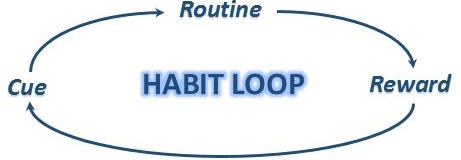 2. Practice mindfulness in everyday life Do not limit your practice to these fixed meditation sessions only; expand your consciousness into your everyday life. Be mindful. Be aware. You can be in the same state of Pure consciousness almost all the time during the day. Mindfulness dissolves your inner conflicts softly and almost imperceptibly. In the long run, meditation sittings and mindfulness are really the best cure for your procrastination. And whenever you are in that state of Presence, you will be at perfect harmony with the world; your body will move lightly and flawlessly; your mind will function impeccably whenever needed, and all your actions will be done in the most effective way. 3. Replace bad habits, create good ones If applicable, it’s a good idea to make a habit out of your desired action. While being in the state of Presence, during your mindful periods of the day, try to entice yourself to do your desired action. While doing that, employ the so-called “habit loop”[1]. Every habit has three components: a cue (trigger), routine and reward. A cue is anything that triggers the habitual routine. If the routine brings a concrete reward to the person, it will probably be repeated. In that case, it would continue to repeat and reaffirm itself due to some sort of reward at the end. The reward is usually an inner state of contentment or relief that comes through the routine itself, but can also be an external pleasant event or thing. The trick to changing bad habits is just is to change the routine, and to leave the same cue and reward. But in this case, you have to designate a trigger and a cue that would be appropriate for your action to become a habit. While being in the state of Presence, trigger yourself with the designated cue and do what you have to do. Finally, treat yourself with the same reward. Repeat this procedure as many times as possible, until your desired action becomes an easy and involuntary act to you. [1]Duhigg, Charles. The Power of Habit: Why We Do What We Do, and How to Change. Random House, Kindle Edition, 2012 4. Change your limiting beliefs Beliefs are our little truths about everything. They give a shape to our life. They are usually supported by underlying emotions, so they become very strong mental habits. Beliefs are often manifested as recurring thoughts (normally together with emotions) on a particular subject. Make a list of your negative beliefs. If you are not sure whether you have a particular belief or not, just say it aloud to yourself and try to feel it. If you have an emotional feedback, either pleasant or unpleasant, you definitely have that belief! After creating your own list of negative beliefs, modify it by adding an opposite, positive belief next to each negative one in order to make pairs of opposite beliefs. Once you have done that, you apply the technique called “Dissolving the Temporary I Plus” (DTI+)[1] on each pair of beliefs from the list. Perhaps you will have to pass through it several times, but negative beliefs will be replaced with fitting positive ones in the end of the process. One of the most important beliefs is certainly about procrastination. For example, you have a belief “I always procrastinate.” You replace it with: “I easily do what should be done immediately.” [1] For more information, check out: Dissolving the Temporary I Plus 5. Have enough rest Never underestimate the importance of good rest. As common person needs in average 8 hours of sleep, plus relaxation and meditation time every day, it boils down to 9-10 hours of some sort of resting day time. If you don’t have enough resting time, your work on anything will be less effective and spoiled with sleepiness. Not only that – your hidden and suppressed subconscious structures will surface more easily. That’s not bad per se, but those elements of your personality will usually be surfacing unexpectedly, when you need them the least. 6. Get motivation from books, talks or movies
This will fuel up your energy. Without this, when you get to the low point, when you get stuck with a challenge that seems unsolvable, you will give up. 7. Get support from closest friends Talk with your friends about this problem. Ask them to support you whenever you get stuck in the mud of procrastination. They should react quickly and decisively every time they notice your delay or reluctance. 8. Do Samyama Samyama is an ancient contemplative practice stemming from Hindu tradition. Being a combination of meditation and concentration, Samyama first brings a practitioner to the state of pure consciousness, then, to an inner union with the object of concentration. It can also be very successfully used for the purpose of attaining goals. The Samyama procedure suitable for the goal achievement and overcoming procrastination is essentially the following: Enter the state of Presence, using some of previously mentioned techniques. While dwelling in that pure consciousness, gently bring into your focus a simple idea which symbolizes your goal, your desire. Don’t lose yourself into that thought, you need to keep the awareness of Presence all the while you are focusing on the idea related to your goal. After several seconds of focusing on that idea, turn back to the pure consciousness. Repeat this as many times as possible. That’s it; you’re done! The whole idea of this practice is: whatever mind content (thought, emotion and sensation) is being consciously experienced while residing in Presence, the best aspect of that content will be seeded in one's life. If the content is harmful, it will diminish. If the content is beneficial, it will temporarily disappear in pure consciousness, but that pure consciousness will sow its seed in one’s life in the most beneficial and effective way. 9. Deal with distracting thoughts immediately Each time you intend to take the concrete action, and you are distracted by a negative thought or emotion or even an outside event, you immediately have to erase or transform that thought, emotion or event within your mind. To do that, you might use one the techniques of Reintegration or other psychological procedures. If you are consistent in this, you will surely and pretty quickly erase and overcome all inner obstacles to your concrete action and, ultimately, to your goal. You will also easily overcome your procrastination. 10. Do regular journaling Compared to all other tips for overcoming procrastination, this is something that is not of the highest priority. Nevertheless, it would be very wise to create a habit of journaling. That simply means to write down everything that comes to your mind, preferably once a day. While doing that, you have to be relaxed and totally honest to yourself. This practice will gradually peel off many layers of negative thoughts, emotions and other inner obstacles. You have to be persistent in this work. However, keep in mind that if you force yourself too much in any of these practices, the results will not be as expected. Don’t push too hard – you should be overcoming your inner barriers and harmonizing your parts of personality softly, in the most natural yet efficient way. Good luck with your new life! :-) AuthorNebo D. Lukovich "You fell in love with a storm. Did you really think you would get out unscathed?" — Nikita Gill Who of us hasn’t ever felt romantic affection toward another human being? It’s such an appealing and exhilarating emotion, adored and desired by so many people all around the world. But, is this infatuation really so good for us? What is its nature, after all? Does It Really Change Us? Let us examine the impact of infatuation on our way of living. When we fall in love, it lasts no longer than several months. The greater its vigor, the shorter its grasp. Spiritual-like feelings of elation, euphoria and admiration, all directed and focused toward a single person, may seem never-ending at first. But we all know very well it’s far from being true. The nature of these euphoric emotions is ephemeral. It is typically based on desire toward the other sex. While being overwhelmed by them, you didn’t solve any of your inner conflicts yet. All the disharmonies in you are still lurking from the vastness of your subconscious mind, and will be inevitably released when the euphoria passes. What’s worse, our inner unintegrated parts of personality will take advantage of our desire toward the other sex and attract a person whose own inner troubles will only serve to feast our negativities, when the romance fades away. These internal tensions will bring you troubles with that person and will have exactly the same level of grasp over you, as the romantic feelings did before. It’s a kind of roller-coaster, which is self-perpetual and seemingly endless. Roots of Romantic Affection How come these thrilling emotions have such an influence in our lives? Being born in this material world entails existence within one of the sexes. Almost all of us are either male or female, with very rare exceptions. And that means that males have seemingly lost their female parts, and vice versa. They didn’t. These “lost parts” have just become unconscious. Hidden. The result? We have the world of two opposite sexes, longing toward one another through romantic love and sensual pleasures, but never really re-uniting at this level. Romantic love is a manifestation of our enormous desire toward the opposite sex deeply hidden within us. This kind of love, with its plethora of ecstatic emotions, is ingrained in all of us, as long as we are completely unaware of our own “other gender.” Men are unaware of their female parts, hidden within the depths of their psyche, while women are longing for their “lost” male parts within their personality. We all have a strong craving for re-uniting with these parts of ourselves, and that attraction is typically being manifested through desire toward the external opposite sex. However, when we unveil our hidden opposite part, accept it and embrace it, we become re-united within us. That part is not the opposite part anymore, it becomes corresponding, balancing and harmonizing. Like Yin and Yang, like Creative and Accepting Force, they are complementary and make our being complete again. Our desire for romantic love diminishes, but instead of it, our ability for Pure Love toward all being becomes much greater! What Can We Really Do?
This re-unification is possible in real life. You can find various techniques for merging the opposites on the Internet. One of these resources for you could be the book “Inner Peace, Outer Success: The Reintegration System,” with its technique “Inner Triangle,” which works perfectly for this purpose, as it's designed for merging the opposites within you. Other resources are, for example, numerous Taoist techniques. Also, consulting and reflecting over the old Chinese book full of wisdom, “I Ching” (the Book of Changes) could be invaluable for one’s inner unification. And one more important thing for all of us is: “embracing” the opposite sex within us doesn't mean for men to become feminized, or for women to become too "mannish". Not at all. For men, it just means to embrace the Yin principle and its emblematic qualities like Softness, Warmness, Wetness, Docility, Acceptance, Kindness, and so on. For women – it means to embrace the Yang principle and its archetypal qualities like Firmness, Decisiveness, Determination, Power, Creativity, Leadership… For all of us, it means to become One with ourselves.
There are several very efficient and innovative methods for dealing successfully with fears, i.e. reintegrating them back into our personality. But first, let me elaborate a little bit on the nature of fears.
What are fears? Fears, together with desires, are some of the basic life dynamisms in every living creature. Fears drive us back from an experience, while desires drive us toward it. Those are two basic dynamisms within us – the repulsive and the attractive ones. Therefore, they are deeply ingrained in the roots of every human being, which makes them extremely important to deal with in any kind of psychological or spiritual work.
In psychology, fear is defined as an unpleasant emotion induced by a real or imaginary threat, which causes a change in our thought patterns, biological functioning or behavior (such as running away, hiding or freezing).
Types of fears The function of rational or appropriate fears is mostly protective – they help us to survive and they are related to our primal biological needs – avoiding life-threatening situations and as such have inherently positive roles. Generally speaking, we don’t have to overcome them, unless they are exaggerated. Irrational or unfounded fears are induced by some imaginary threats and they are responsible for undermining our health, confidence, desires, plans, hopes, and relationships with others. Therefore, we should deal with them as meticulously as possible. These are the most common irrational or exaggerated fears in people (often referred to as phobias):
Triggers Every fear has its own trigger which launches it. It could be a concrete person or situation which appears from time to time in our everyday life. Or it’s the occurrence of a specific thought or another emotion within us. For example, our boss has invited us to a meeting. Although you exactly knew that the subject of discussion shouldn’t be worrying you, it still triggered a strong fear within yourself that you could be attacked. The trigger had been formed much earlier before on many similar occasions. Our subconscious mind has connected these two types of occurrences and formed the trigger and its corresponding irrational fear. The connection between the trigger and the fear is very tight and habitual, which often means that we need to deal with triggers too, in order to avoid the manifestation of their emotions, unless we reintegrate the emotion itself. However, if we were able to remove all triggers of the fear (or any other unpleasant emotion), we wouldn’t remove the fear itself from our psyche. It would pose a dangerous situation because that emotion would need to express itself in some way, which would lead to some uncontrolled outbreaks or even to personality disorders. Thus, if we deal with triggers, we must deal with their fears concurrently. I recommend that you make a list of fears together with their triggers. Go through the list and try to reintegrate all emotions as well as triggers. Now, here are several concrete ways to deal with fears. We can deal with fear in three stages of its cycle:
What to do while fear is being initiated They say that the easiest way is to put out the fire at the beginning. The same is with fears – we should try to intercept the fear while it’s being triggered. If we had been previously working on the triggers, it would be much easier for us to recognize the trigger itself and the initial appearance of the fear. That’s the ideal moment of entering the state of Pure Consciousness or Presence. Just be aware, be alert in a calm and peaceful way and watch the trigger and/or the developing emotion. If we manage to stay in that fully conscious state for a while, the fear will subside quickly and completely. If you repeat the same process several times, you can even free yourself of the fear’s grasp forever. What to do when we are overwhelmed with a fear If we miss the trigger and find ourselves already overwhelmed by a particular fear, consider that as a good opportunity to immediately deal with it. But that’s easier said than done. First, we must regain our stability and confidence. Breathe deeply. Many practitioners claim that breathing rhythm 7/11 is the best for that purpose. That’s simply counting to 7 while inhaling and to 11 while exhaling. Our attention should be on the breathing itself, like in a breathing meditation. Just try to consciously follow the movement of air into your body and out of it, along with any sensations that the movement produces. That’s the breath mindfulness. By doing this way, you will calm yourself down and gain confidence. The next thing to do is to actively reintegrate the fear itself. In his remarkable book “The Power of Now,” the German author Eckhart Tolle gives us some very useful advice related to the very moment when the “pain body” (in this case: the emotion of fear) attacks: “If you are able to stay alert and present at that time and watch whatever you feel within, rather than be taken over by it, it affords an opportunity for the most powerful spiritual practice, and a rapid transmutation of all past pain becomes possible.” He adds another concrete instruction: “Focus attention on the feeling inside you. Know that it is the pain-body. Accept that it is there. Don't think about it—don't let the feeling turn into thinking. Don't judge or analyze. Don't make an identity for yourself out of it. Stay present, and continue to be the observer of what is happening inside you. Become aware not only of the emotional pain but also of "the one who observes," the silent watcher. This is the power of the Now, the power of your own conscious presence. Then see what happens.” Another effective and pro-active way I would like to recommend here is one of the basic Reintegration techniques, Accepting the Temporary I (ATI). It is based on the concept of the “Temporary I,” which is your subtle feeling of self, your I-feeling within your body at the moment, while you are experiencing some mind content.
It is typically located in your head, neck or upper chest, although it could be positioned in another area of your body, depending on the experience itself.
The Temporary I shapes your life experience. It tunes yourself to particular thoughts, emotions or external circumstances. If the foundation of the experience is eliminated, then the experience itself will vanish. Therefore, if the Temporary I disappears, so will the experience that it produces. As soon as you learn this technique, you will instantly recognize its astonishing efficiency. Whenever you become aware of your anxiety or fear, apply the ATI method and you will sense an immediate relief. So, when you want to dissolve an unwanted experience with the ATI technique, you will: 1) Direct your attention to it and pinpoint its location (if possible); 2) Feel your “Temporary I” from which you are experiencing the content, and finally, 3) Completely accept the “Temporary I.” The only criterion you could use for examining the success of the process is whether you find your consciousness pure, empty of content and diffused afterward, or not. The ATI technique is described in detail here, while the concept of Temporary I and how to find it is depicted here. You can do the ATI in countless common situations. For example, if you become aware that you are overwhelmed with fretful thoughts, you can accept and dissolve your Temporary I from which you are experiencing them. They will disappear, at least for a while. Or, if you find yourself flooded with emotions of fear, worry, angst, or anger, notice the location of your Temporary I and accept it. Of course, if this mind content on which you were doing the ATI arises again, just repeat the procedure until it vanishes. Similarly, if you are in the company of a nervous or irritating person, you may quietly accept several times the Temporary I from which you are feeling the annoyance. There is no limit to the practical implementation of the ATI, as it requires only seconds of mild, conscious effort to profoundly detach from the unpleasant situation or emotion. How to deal with fears when they are in a dormant state Although it may seem paradoxical, fears do have inherently helpful roles in our maturing to a well-integrated, spiritual person. They have deeply hidden genuinely positive intentions for us, but those intentions have been gradually distorted into apparently negative behavior during long periods because of numerous misconceptions, limited perception, and challenging environment. However, we should reintegrate them. As we are expanding our consciousness, we don’t need them anymore. And nobody of us likes to have fears, so are already motivated pretty well to overcome them. As is the case with all other parts of the personality, we should always face them, accept them wholeheartedly, and finally, transform and reintegrate them completely into our being, using an appropriate technique. We should never fight them! If we fought them, we could suppress and push them temporarily into the depths of the subconscious. We were actually doing that many times in our past, but this approach has only strengthened fears, in the long run, enabling them to surface out from time to time and overwhelm us with much more power than before. So, if you missed the chance of dealing with fear in its initial phase or while being fully expressed, it’s still not too late to reintegrate it. As it is now in its “dormant” state, waiting for the next appropriate situation to express itself again, the fear must be cautiously invoked within our mind. Visualize one of its triggers. That should be enough for the emotion’s partial re-appearance. Stay fully conscious and aware. Stay present. Then do the ATI technique several times. If you are determined to deal with all other fears from your list that was mentioned above, just go boldly through and relentlessly reintegrate the fears, one by one. You will probably need to repeat the whole circle a few times, if you are using the ATI. Don’t forget to remove their triggers. If you don’t do that, the triggers will continue to re-create the fears and aversions, driven by corresponding neurological habits previously formed within your brain. Apply the Accepting the Temporary I (ATI) technique again. However, there are other techniques for reintegrating fears that are even more advanced than ATI: the Inner Triangle (IT), Single Chain (SC) or Double Chain (DC) techniques, Dissolving the Temporary I (DTI), Dissolving the Temporary I Plus (DTI+) and Gentle Touch of Presence (GTP) – they all are thoroughly explained in the book “Inner Peace, Outer Success.” For those of you who aren’t in a position to get the book, I recommend using the ATI technique only. Done several times (which depends on the complexity and severity of a particular fear), it will be still enough for this purpose in many cases. Loving-kindness Love dissolves all negativity in us. Of course, I’m not referring here to a kind of romantic love, but to a universal, unconditional Love, deep compassion, like the love parents feel toward their children, or similar. That kind of love has also a great healing power, including healing fears. We can heal ourselves and other people as well, just with Love. If we were able to open up our hearts entirely and lastingly, I believe it would be absolutely enough for complete healing. How can you wake up Love in your heart?
I can recommend only some of the numerous ways to do that. For example, imagine that a little child, or toddler, is approaching you. It’s smiling innocently at you, wobbling in its walking. It’s so cute, with bright, smiling eyes staring at you. The child is giggling with its sweet voice, telling you “I love you!” You are embracing it with warmth. How couldn’t you feel Love toward such an innocent being? Let Love rush out from your heart.
When you open your heart, let Love fill you completely. Extend it also to yourself. Love yourself with your whole heart! Feel that you deserve the deepest Joy and Happiness. After all, you have always been giving the best you could. You, as that child, need only to be happy. You only want to be happy in your life and you definitely deserve that! Love yourself, your body, and your whole being. Wish yourself all the best. Love all parts of your being and personality, all traits, flaws, mistakes and imperfections; love the body that has served you so dutifully your whole lifetime; love your life, your past, present and future, anything that comes to your mind. Let Love amplify and expand to encompass all people around you. Love your family, your children, spouse, parents, friends, colleagues; love your job, your errands and annoying things; love your enemies, too; let Love pour out from your heart toward all of them. Extend your Love to all humanity. Feel yourself as a part of it. Love your darling pets; love all animals, plants and all living beings. Love your Mother Earth, the entire Universe, the entire Existence. Feel the fact that countless beings exist within Creation, and all of them are trying to be happy in some way. Wish them all true happiness with your whole heart. This is Love and it is miraculous. It can potentially heal, harmonize and mature everything. Try not to expect healing, but love yourself and all beings around you. If the healing should come, it will come, to both you and inevitably those around you. Something wonderful will surely happen, although you cannot know what it will be. Additionally, here is a well-established procedure for the loving-kindness meditation, as practiced in some of the Buddhist traditions. Basically, it boils down to this: 1. Sit in a comfortable position. Relax. 2. Do the ATI a few times. 3. Move the center of your being into your Heart (you I-point in the chest). Repeat the following loving-kindness phrases:
4. Think of someone for whom you have very warm and loving feelings. This can be a parent, friend, sibling or even a pet. Repeat the same loving-kindness phrases toward that being:
5. Think of someone for whom you have neutral feelings. This can be an acquaintance, a neighbor, or even a person you know of from the media. Repeat the same loving-kindness phrases from the previous steps for this person. 6. Think of someone for whom you have negative feelings. Repeat the same loving-kindness phrases for this person as well. 7. Radiate loving kindness to all beings in the Existence. Repeat the loving-kindness phrases for all beings. Practicing the loving-kindness meditation in any of the described approaches will lead you not only to gradual reintegration of all your fears, but also of other “negative” elements of personality and lead you directly toward the final liberation, Nirvana or God, whatever expression you prefer. Reintegrate your fears. You will feel immense relief and deliverance. You will release yourself from an inner prison. You will sense the limitlessness. AuthorNebo D. Lukovich The present moment is the only moment in your life that you actually have.
Think about this: when you were experiencing anything in your past, you were experiencing it in the Now. Likewise, in the future, any event in your life you will be experiencing also in the Now. You will always be in the Now. Although there are many different opinions whether our past and future are real or not, our normal way of living is definitely anchored only to this moment. Even if we could travel back to the past and re-experience some event, we would also experience it in the Now. The same stands for some imaginary time-traveling future experience. But, in order to really answer this question, we must define the expression “living in the present” in the first place. To live in the Now means to live consciously, to fully experience ourselves and our surroundings without redundant thoughts and other distractions. One could say that deep sleep is also a thoughtless state. That’s true, but it cannot be regarded as the living in the Now, because it is not a conscious state. One could also say that while we are immersed in unnecessary thinking, we are in the Now too, because we are experiencing those thoughts in the present moment. But that is also not a fully conscious state, as we are identified with those thoughts, so it’s not really being in the Now. When we are in the Now, we are either in a thoughtless state, abiding in Pure consciousness or Presence, or we are consciously thinking or doing something (but only that which is really needed for that moment). That thinking or doing is not redundant, but fully conscious and purposeful. Also, if we are lost in our thoughts, we are identified with them. We are not conscious ofthem. We are lost in imaginary past or future. That unnecessary wandering drains huge amounts of energy out of us. It distracts us from an action (or non-action) appropriate for the situation in which we are at that very moment. The perfect response to every situation stems only from the state of Presence. That response can be pro-active or non-active, but either way it is the most appropriate response at that moment. Living in the present gradually liberates us from all unnecessary burden and allows us to live in the most efficient, yet peaceful way. |
Please note that most of the articles have a "Read More" break, which is sometimes hardly visible.
It is located at the bottom of visible part of the article, on the right side. To continue reading the article, click on that link. This page may contain affiliate links meaning we earn a commission if you use those links.
We only recommend pages we appreciate and trust. Archives
March 2023
Categories
All

|
For guest posts or placing ads on our website, please use the contact form on the 'About/Contact Us' page.



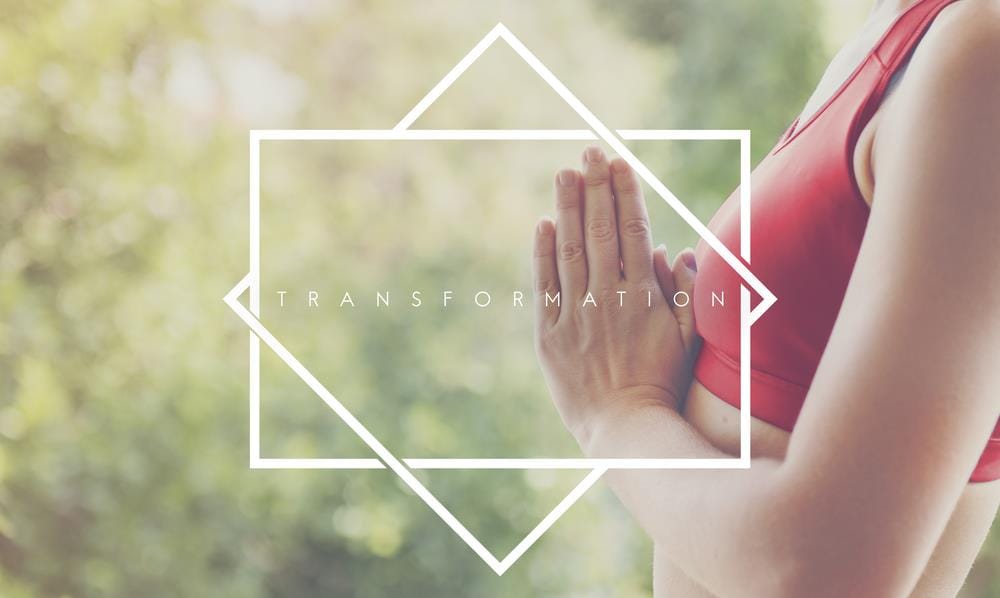
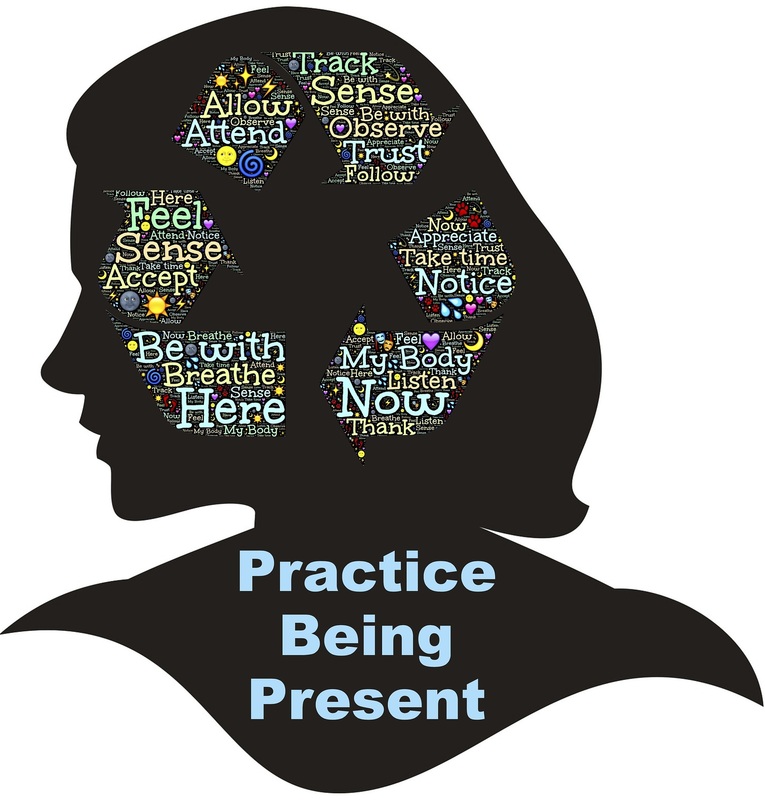
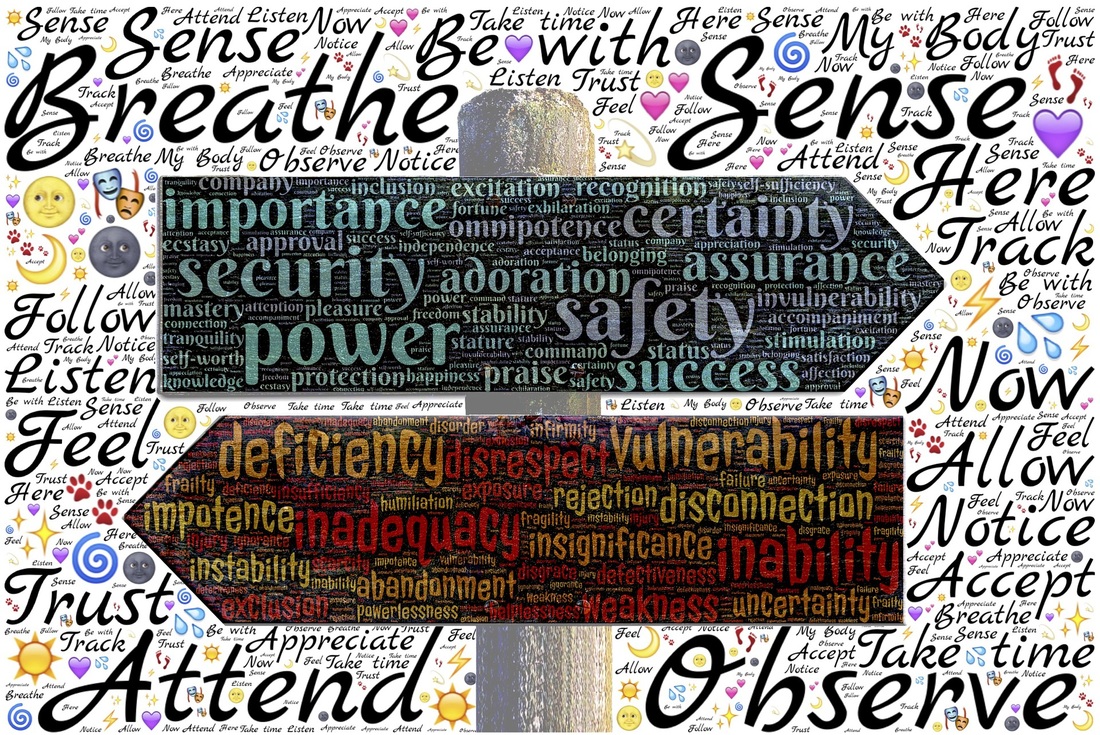






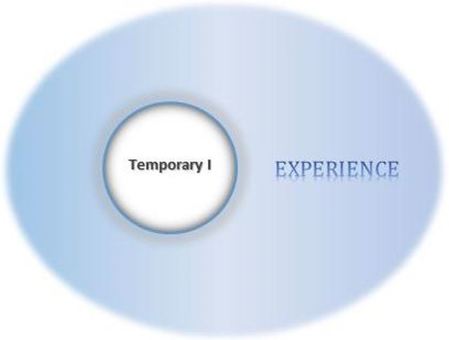


 RSS Feed
RSS Feed

